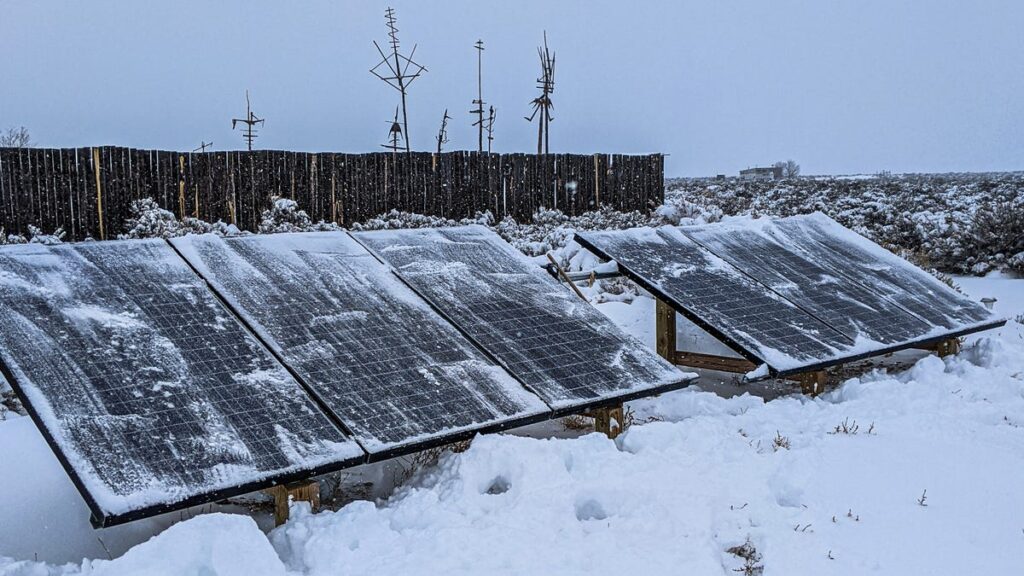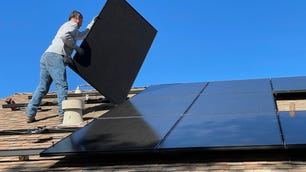When we bought a not-quite-finished off-grid home about a month into the COVID-19 lockdown, my wife and I set out on an adventure in more ways than one. We decided it was the right time to begin the project of installing half a dozen solar panels to harness the power of the sun with a little help from an unlikely battery donor. As the project progressed, the experience helped me learn more about how solar energy works and how best to turn it into the electricity that now runs our home.
The motivation to add a solar power system to your home is usually simple: reduce your power bill or even earn money from your utility. Maybe you add some solar batteries to have a backup in case of an extended outage.
But if there’s no grid at your location and solar is your primary source of energy, you’ll have a different set of motivations and concerns, including some that force you to look at basic facts in a whole new light.
My solar panels were initially connected to — believe it or not — a pair of huge 6-volt golf cart batteries, each weighing 83 pounds and wired together in series to create a 12-volt system, which generates plenty of 120-volt alternating current via a large inverter. It’s a modest system for our modest home.
My solar power system first began producing around the time of the summer solstice in June 2020, and it was a truly magnificent thing to behold. But it was just the beginning: Relying on the sun transforms your relationship to energy, providing some unexpected insights and greater accountability when it comes to consuming it.
Solar power is more like water than magic
To flip a switch and watch as a refrigerator, wireless router or lightbulb springs to life — knowing that its power has been quite literally pulled out of the air — is a wonder to behold.
What is going on inside that light socket? Some tiny computer converting invisible electrons to visible light? Gnomes? To me, either explanation once seemed equally likely. Then a mentor explained that electricity behaves like water — flowing across the path of least resistance and filling any reservoirs along the way with energy, be it a battery or an electron-draining laptop screen.
Demystifying the power of electricity was empowering. Few things are more delightful to me than watching water flow, be it majestic waterfalls or crashing waves. As a kid, I took great joy in engineering canals with my cousins using just a bucket of water and a plastic shovel on lakeshores. The revelation that electricity follows similar rules, yet is invisible and also makes our entire world function, is eye-opening. Putting it to use with solar technology that allows you to collect, contain and control that power autonomously is life-changing.
Harvesting your energy directly from a ball of fire in space can cause you to revisit some basic facts learned in grade school, like how the Earth’s tilted axis gives us seasons and varying amounts of sunlight at different times of year. It’s all basic geometry, really.
But in my new home where the sun provides not just warmth, but also electricity, this geometry takes on a whole new meaning.
How solar power shifted my view of energy usage
What I didn’t comprehend when I first connected our system in the middle of summer was that it was operating under ideal conditions, with almost 15 hours of sunlight. The panels are tilted at an angle that splits the difference between what’s ideal for summer and winter solstice. But, while standing in the summer sunshine and marveling at my handiwork that day, I didn’t account for something else.
Less sun in winter means less electricity, sure. But the shortfall can compound quickly. There can be up to five hours of less sunlight per day in December in my location compared to June. That’s five hours less electricity generated, but it’s also five hours more spent drawing power from batteries, which — once again — have five hours less to charge.
This may seem quite obvious to a lot of you, but many more of us go through life on the grid and simply think of winter as a time when the sun sets a few hours earlier than in the summer. But when the sun is your source of light and power, you quickly realize there is a total daily energy deficit of over 10 hours between summer and winter solstice for most people living in the US.
It gets worse. In the winter we’re inside most of the time to avoid the cold, meaning more lights, screens, heaters and whatever else are draining more precious electrons compared to the summer. (Running an air conditioner, which we don’t need living at 7,000 feet, might even things out more.) If you store your batteries outdoors as we did for two winters with flooded lead-acid golf cart batteries, you’ll likely see their performance degrade a bit in the cold as well.
Add it all up and winter off the grid means less electricity, higher demand and decreased performance. This is to say nothing of the occasional multiday snowstorm that blocks out the sun, covers the solar panels and collapses the whole system. This is why we have a portable home generator that can run off gasoline or propane. We found ourselves having to run it more than anticipated our first few winters, especially in the deepest dark depths of winter or on days with a few clouds or a few loads of laundry to run. Ultimately, relying less on the generator will likely require installing more panels and/or battery capacity to capture as many available electrons as we can on sunny days.
It turns out that pesky axial tilt gifts us with delightful seasons that define the rhythms of life, but in the winter it means less sunlight, less warmth and less electricity generated. This is especially true if you don’t install a racking system for your panels that allows you to adjust their angle to be nearly vertical in order to catch all of those precious rays from the low-hanging winter sun. Guess what’s at the top of my list of needed DIY upgrades?
Read the full article here


